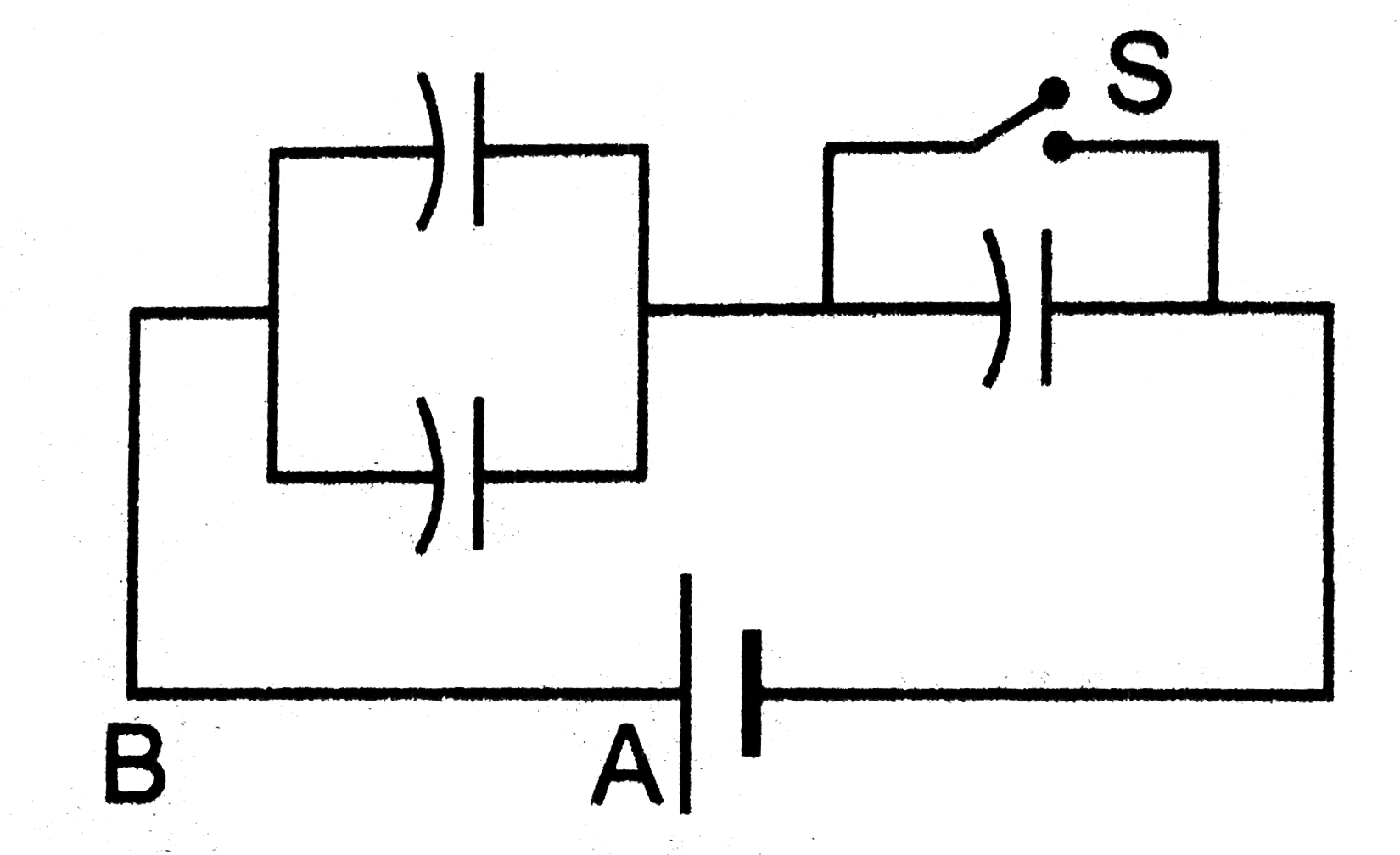The particle ‘P’ shown in figure has a mass of 10 mg and a charge of . Each plate has a surface area 100 on one side. Potential difference V applied to the combination to hold the particle P in equilibrium should be

84 mV
22mV
43 mV
12 mV
The correct Answer is:C
Topper's Solved these Questions
- ELECTROSTATIC POTENTIAL AND CAPACITANCEBOOK - PATHFINDERCHAPTER - ELECTROSTATIC POTENTIAL AND CAPACITANCEEXERCISE - QUESTION BANK
50 Videos
- MAGNETIC EFFECT OF CURRENT AND ELECTROMAGNETISM-I,II AND IIIBOOK - PATHFINDERCHAPTER - MAGNETIC EFFECT OF CURRENT AND ELECTROMAGNETISM-I,II AND IIIEXERCISE - QUESTION BANK
213 Videos
Similar Questions
The particle P shown in the figure has a mass of 10 mg and a charge of −0.01μC. Each plate has a surface area 10−2m2 on one side. What potential difference V should be applied to the combination to hold the particle P in equilibrium?

View SolutionThe particle P shown has amass of 10mg and a charge of−0.01μC.Each plate has a surface area

View Solution
Knowledge Check
The particle P shown in the figure has a mass of 10 mg and a charge of −0.01μC. Each plate has a surface area 10−2m2 on one side. What potential difference V should be applied to the combination to hold the particle P in equilibrium?
 A43mVB35mVC50mVD55mV
A43mVB35mVC50mVD55mVOne plate of a capacitor of capacitance 2μF has total charge +10μC and its other plate has total charge +40mUC. The potential difference between the plates is (in Volt).
A7.5B15C25D50
The particle P shown in the figure has a mass m and a charge -q. Each horizontal plate has a surface area A potential difference V=n(mgε0A2qc) should be applied to the combination to hold the particle p in equilibrium then find the value of n.

View SolutionThe particle P shown in the figure has a mass m and a charge -q. Each horizontal plate has a surface area A potential difference V=n(mgε0A2qc) should be applied to the combination to hold the particle p in equilibrium then find the value of n.

View SolutionOne plate of a capacitor of capacitance 2μF has total charge +10μC and its other plate has total charge +40μC. The potential difference between the plates is (in Volt).
View SolutionLower plate of a parallel plate capacitor is fixed on a horizontal insulating surface. The upper plate is suspended above it using on elastic cord of force constant K. The upper plate has negligible mass and area of each plate is A. When there is no charge on the plates the equilibrium separation between them is d. When a potential difference = V is applied between the plates the equilibrium separation changes to x.
(a) Calculate V as a function of x.
(b) Find the value of x for which V is maximum. Calculate the maximum value of V(=Vmax)
(c) What will happen if V>Vmax ?
(d) Plot a rough graph showing variation of equilibrium separation (x) with V

View SolutionEach of the three plates shown in figure has an area of 200 cm^2 on one side and the gap between the adjacent plates is 0.2 mm. The emf of the battery is 20V. Find the distribution of charge on various surfaces of the plates. What is the equivalent capacitance of the system between the terminal points?

View SolutionEach of the three plates shown in figure has an area of 200 cm^2 on one side and the gap between the adjacent plates is 0.2 mm. The emf of the battery is 20V. Find the distribution of charge on various surfaces of the plates. What is the equivalent capacitance of the system between the terminal points?

View Solution
